how to zest a lemon without a zester
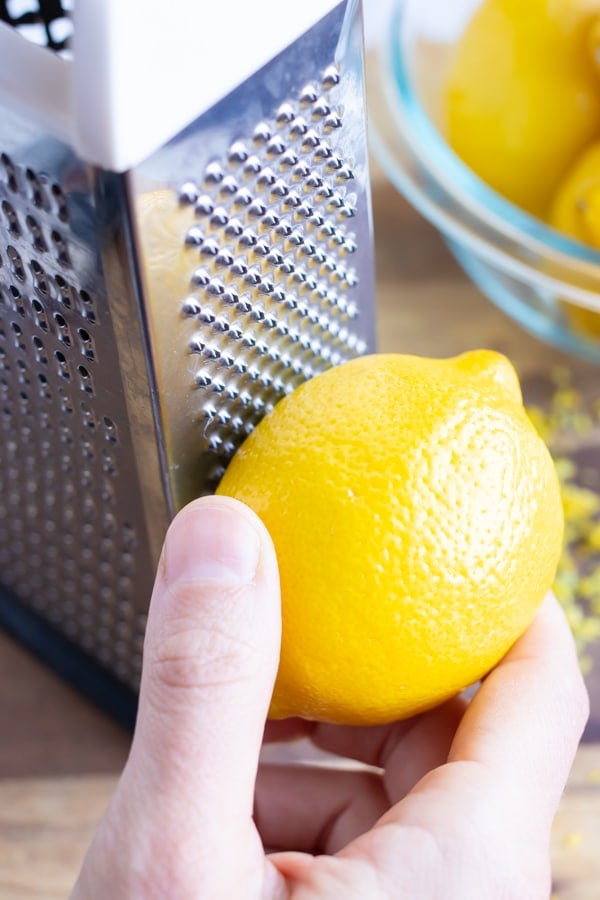

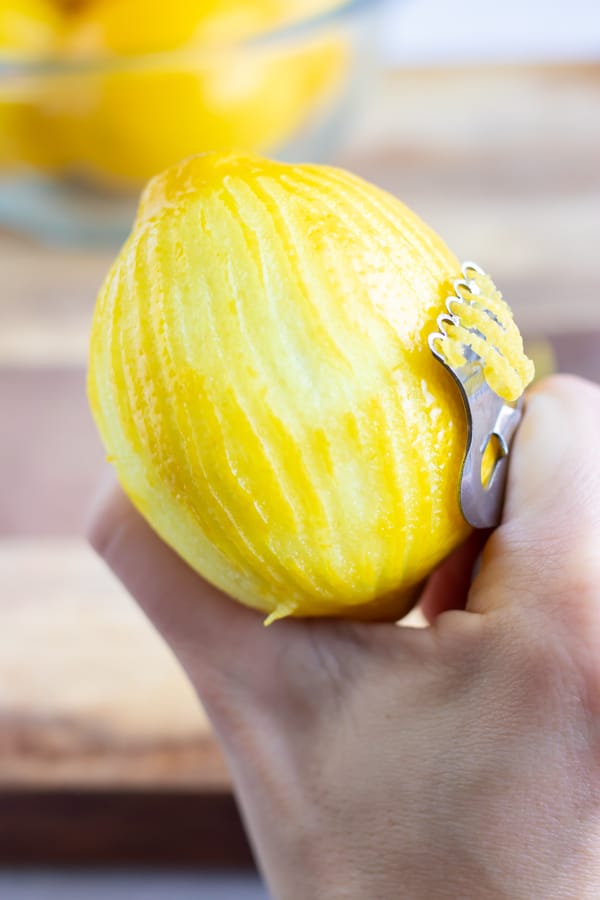
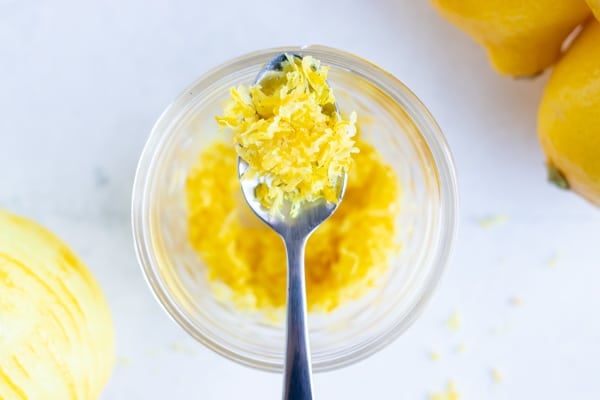
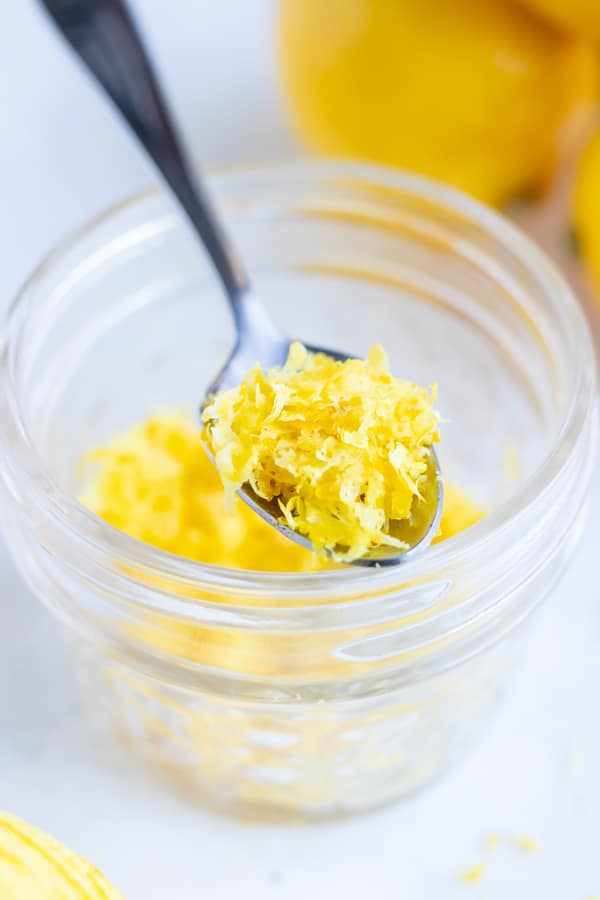
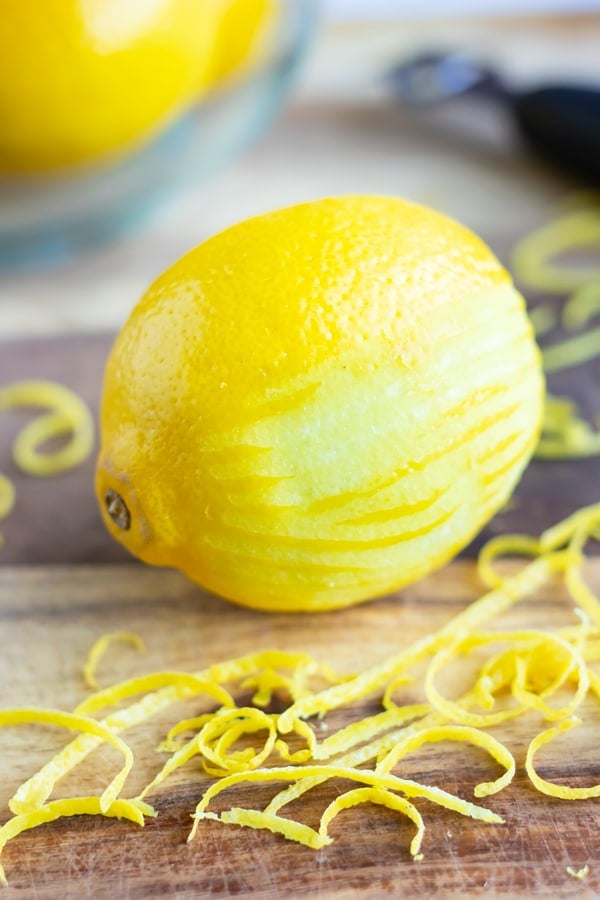
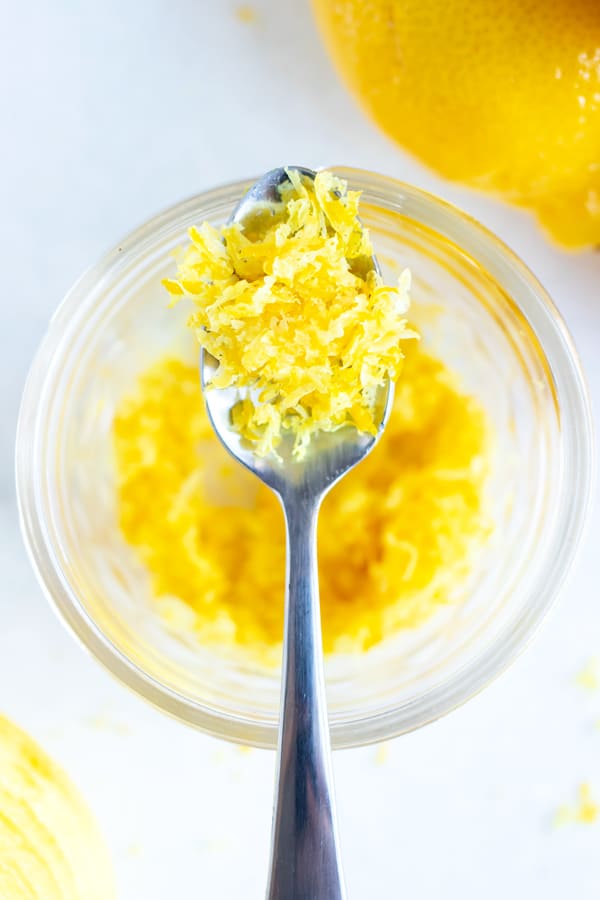
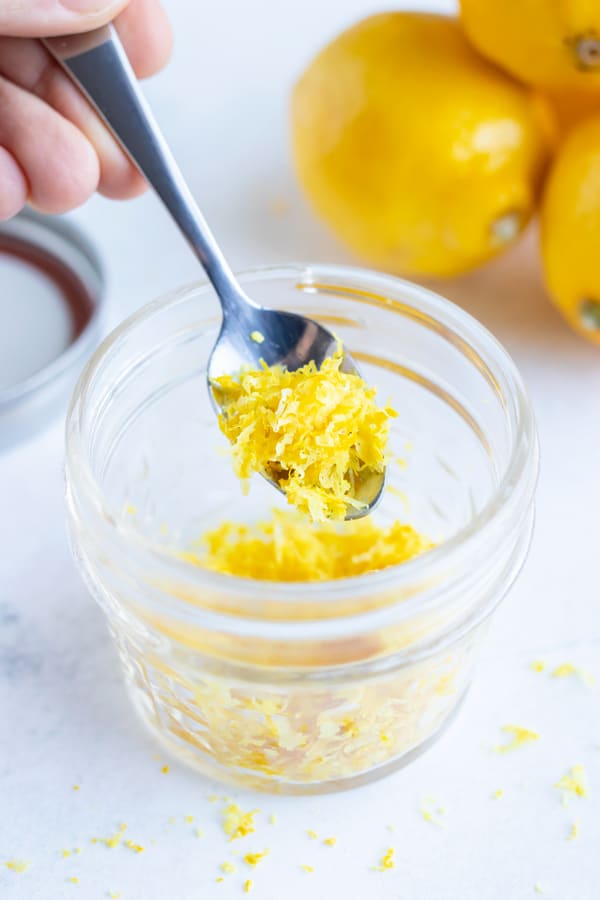
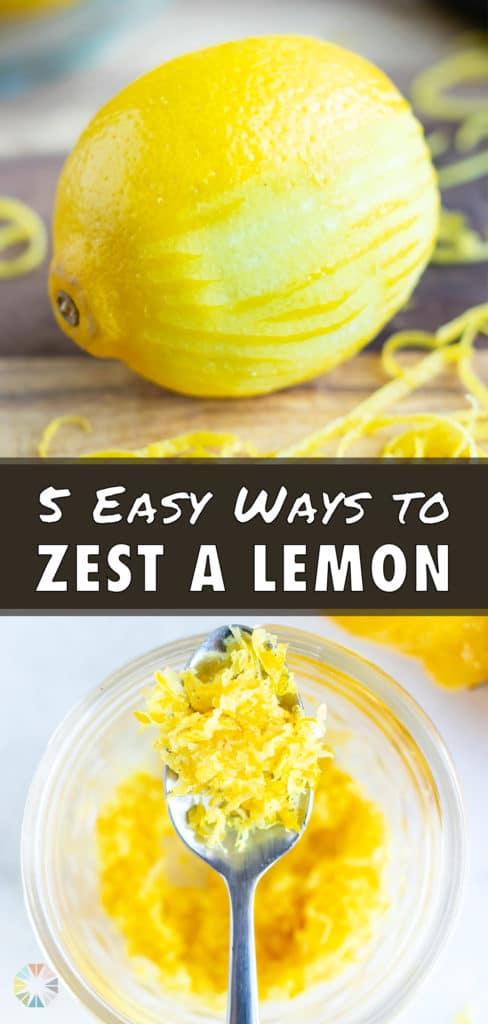
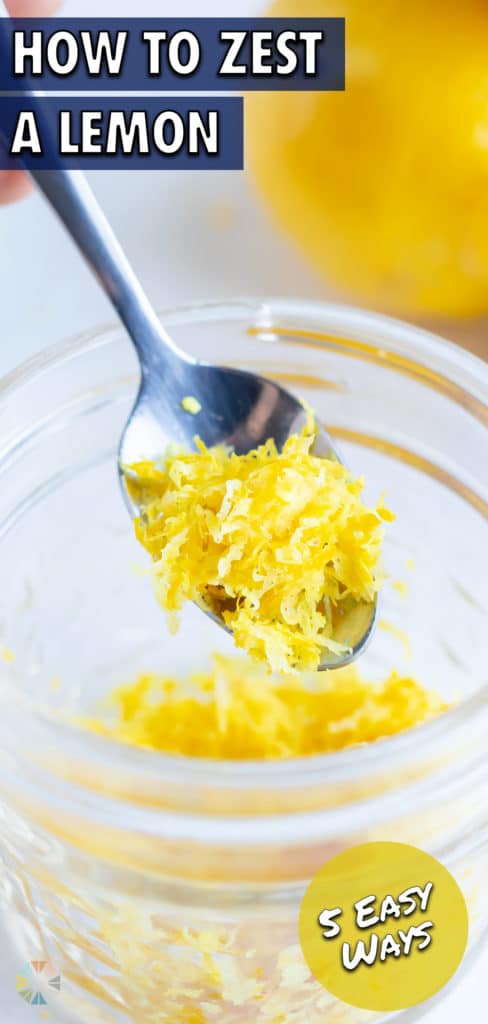
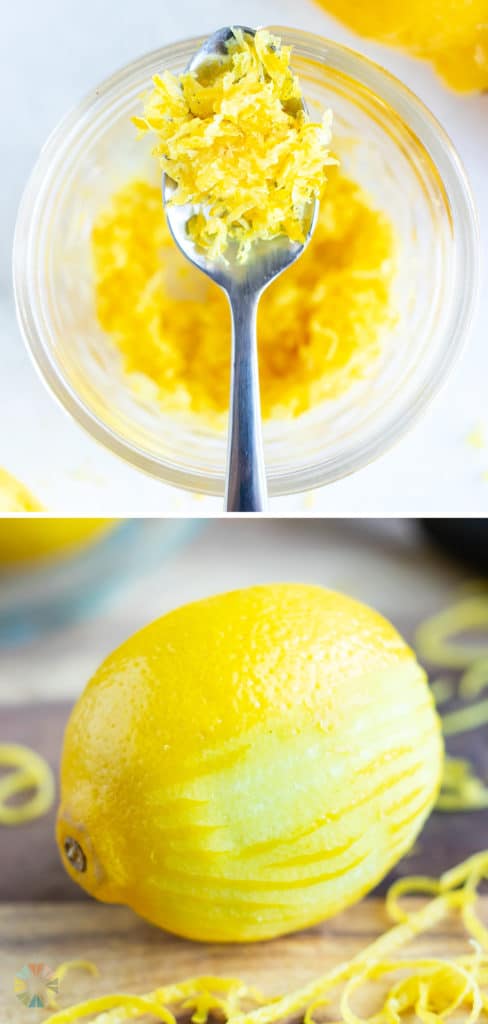
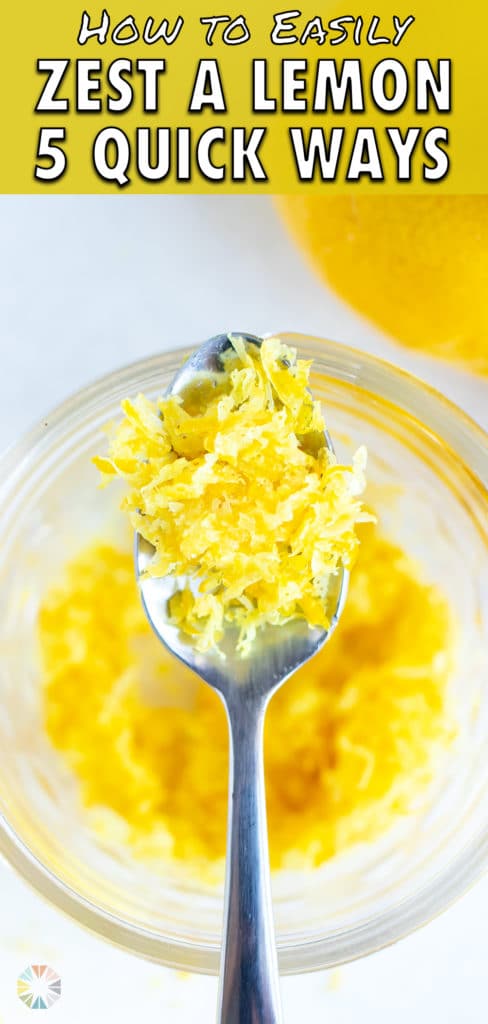
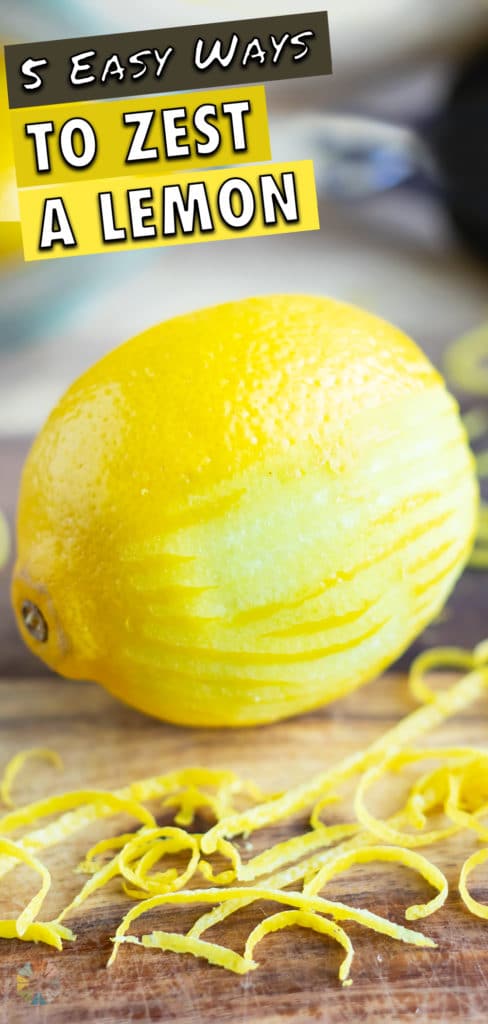
Learn How to Zest a Lemon five different ways using kitchen tools and utensils you already have on hand. From using a microplane or citrus zester, to grating it with a cheese grater, it's so easy to get fresh lemon zest to add a ton of flavor to your favorite recipes!

Zesting Lemons
One of the quickest and easiest ways you can add a TON of flavor to recipes is by adding a bit of fresh lemon zest.
This may initially seem like a big boy's culinary trick that some of you beginners are a little intimidated by.
But let me reassure you… you can zest a lemon even if you don't have a citrus zester on hand!
In fact, I'm going to show you five different ways you can zest, grate, and peel a lemon with kitchen tools you have on hand.
And once you've mastered these techniques, you can use them to zest limes and oranges.

What is Lemon Zest?
Lemon zest is a recipe ingredient that consists of the colorful, yellow outer layer of the fruit and is obtained by scraping or cutting with a knife.
It is extremely flavorful and adds a burst of freshness to your favorite dishes.
Unlike the juice of lemons, the zest contains essential oils, more flavor, and is not nearly as acidic or tart.
When zesting lemons, limes, or oranges, you want to make sure and only remove the brightly colored flesh of the peel. Avoid the white part, or pith, directly underneath the peel as this is quite bitter.
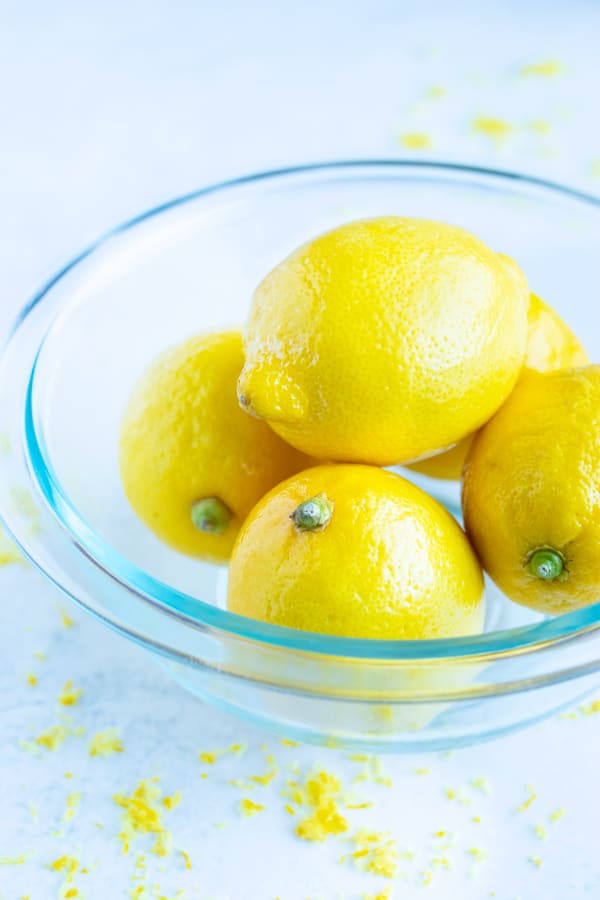
Waxed versus Unwaxed
Most non-organic lemons contain a wax coating on the exterior of the fruit to preserve it and keep it looking fresh.
While the wax coating is technically safe to eat, you may still opt to de-wax them before zesting.
To de-wax lemons:
- Bring a large pot of water to a boil and pour hot water over lemons in a colander.
- Immediately scrub lemons with a vegetable brush to remove the wax coating.
- Dry the lemons thoroughly before zesting.
Alternatively, you can buy organic citrus which are either not covered in wax at all or have an organic beeswax coating.
How to Zest a Lemon
The two most common methods for zesting a lemon is to use either a microplane or a citrus zester.
These are the quickest and easiest ways, but do require an extra kitchen gadget.
If you do not have a citrus zester laying around, there are a few other ways you can still get this flavorful ingredients.
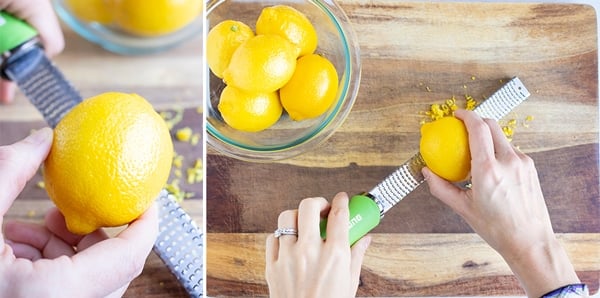
Microplane
By far my favorite method to use when you want finely grated lemon zest.
A microplane is a specific kitchen tool that is used to remove the brightly colored flesh from citrus.
To zest with a Microplane:
- Hold the lemon in one hand and the microplane in the other.
- Move the lemon back and forth over the grates of the microplane, rotating as you go. Pay close attention to the placement of your fingers. (A microplane has very sharp edges and can easily cut you!)
- Continue zesting the lemon until the yellow peel is removed.
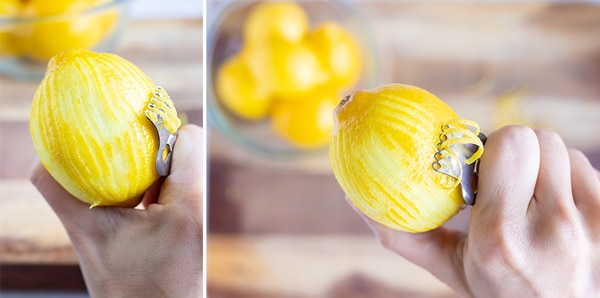
Citrus Zester
The next method for zesting lemons is to use a citrus zester.
Using this tool will give you longer strands of peel versus the smaller pieces produced by a microplane.
To Zest with a Citrus Zester:
- Place the fine, sharp-edged holes on one end of the citrus, following the curvature of the fruit.
- Push slightly into the fruit and pull down to the other end.
- Repeat this process until the entire lemon peel is removed and only the pith remains.

Cheese Grater
A boxed cheese grater is a secret weapon that most home cooks already have in their cabinet.
Make sure you use one that has the small holes for grating cheese, and not the larger holes for shredded cheese.
To Zest with a Cheese Grater:
- Place the lemon on the side of the cheese grater that has the smallest holes.
- Move it back and forth, paying close attention to the placement of your fingers.
- Continue zesting the lemon until the entire yellow part is removed.
Vegetable (Potato) Peeler
A vegetable, or potato, peeler is another quick way to zest a lemon if you don't have a zester or microplane handy.
While this method is a little more technique sensitive, you will still be able to get a good bit of lemon zest if you're in a pinch.
To Zest with a Vegetable Peeler:
- Place the sharp edges of the peel on one end of the citrus and push slightly into the fruit.
- Pull down to the other end, paying close attention not to cut into the fruit too deep. You do not want to remove as little of the white part as possible.
- Repeat this process until the entire peel is removed and only the pith remains.
- Finely chop the lemon peel to make lemon zest.
Knife
Much like the vegetable peeler method, using a knife is a bit more technique sensitive.
But the best part? Everyone has a knife on hand!
It's easiest to use a paring knife when peeling citrus. However, you can always use a very sharp chef's knife if that is all you have on hand.
To Zest with a Knife:
- Cut off one end of the lemon. Place the lemon cut-end down on a cutting board. (Image on left above.)
- Or you can skip this step and just hold the lemon steady on a cutting board. (Image on the right above.)
- Carefully cut into the fruit at an angle and remove the bright, yellow peel, avoiding the white pith.
- Remove any white pith that remains.
- Optional: If you would like to have smaller pieces of peel, finely chop until your desired size is reached.

FAQs
How long does it last?
It's best to use lemon zest immediately after grating or zesting for the most flavor.
If you must store it for later, freezing citrus zest is the best option.
How to store citrus zest?
Fresh citrus zest can be stored in a small airtight container for up to 6 months in the freezer.
Do not pre-zest citrus and store in the refrigerator as it loses it's natural oils, and thus it's pungency, rather quickly.
How much zest in one lemon?
A medium-sized lemon will yield roughly 1 tablespoon of zest.
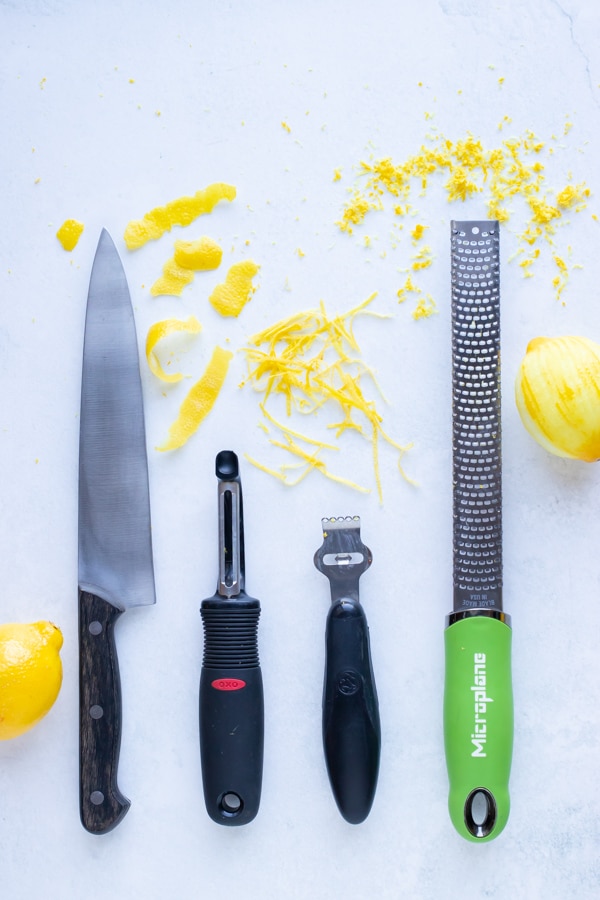
Recipes to Try
Here are a few of my favorite lemon recipes that use zest as a key ingredient:
Lemon Garlic Roasted Asparagus
Tahini Salad Dressing
Lemon Poppy Seed Muffins
Pasta Primavera
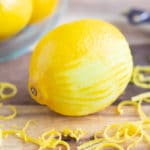
How to Zest a Lemon (5 Easy Ways!)
Learn How to Zest a Lemon using five different methods with kitchen tools and utensils you already have on hand. From a microplane or citrus zester, to grating it with a cheese grater, it's so easy to get that fresh lemon zest for added flavor to your favorite recipes!
Prep Time 2 minutes
Total Time 2 minutes
Servings 1 serving
Calories 3 kcal
- Lemons
To Zest with a Microplane:
-
Move the lemon back and forth over the grates of the microplane, rotating it as you go. Pay close attention to the placement of your fingers. (A microplane has very sharp edges and can easily cut you!)
-
Continue zesting the lemon until the lemon peel has been removed.
To Zest with a Citrus Zester:
-
Place the fine, sharp-edged holes on one end of the citrus, following the curvature of the fruit.
-
Push slightly into the fruit and pull down to the other end.
-
Repeat this process until the entire lemon peel is removed and only the pith remains.
To Zest with a Boxed Cheese Grater:
-
Place the lemon on side of the cheese grater that has the smallest holes.

-
Move it back and forth, paying close attention to the placement of your fingers.
-
Continue zesting the lemon until the entire yellow part is removed.
Using a Vegetable Peeler:
-
Hold the lemon in your non-dominant hand and the peeler in the other.
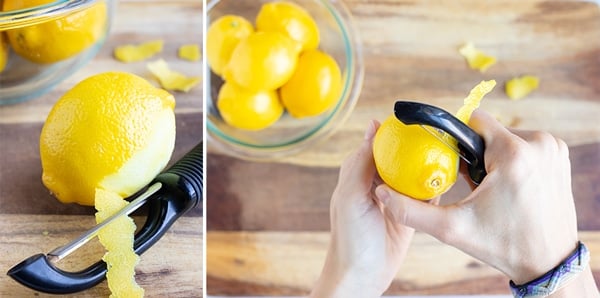
-
Place the sharp edges of the peel on one end of the citrus and push slightly into the fruit.
-
Pull down to the other end, paying close attention not to cut into the fruit too deep. You want to remove as little of the white part as possible.
-
Repeat this process until the entire peel is removed and only the pith remains.
To Zest with a Knife:
-
Cut off one end of the lemon. Optional: If you would like to have smaller pieces of peel, finely chop until your desired size is reached.
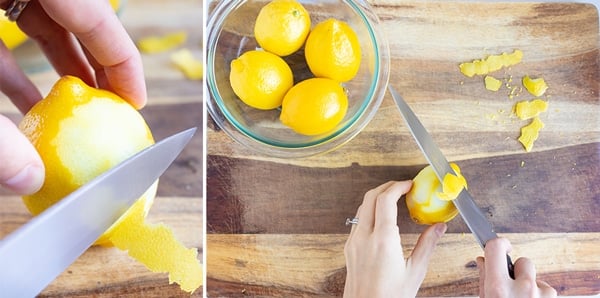
-
Place the lemon cut-end down on a cutting board. (Image on left above). Or you can skip this step and just hold the lemon steady on a cutting board. (Image on the right above.)
-
Carefully cut into the fruit at an angle and remove the bright, yellow peel, avoiding the white pith. Remove any white pith that remains.
-
Optional: If you would like to have smaller pieces of peel, finely chop until your desired size is reached.
- One medium-sized lemon will yield roughly 1 tablespoon of zest.
- Store extra lemon zest in an airtight container in the freezer for up to 6 months.
- Limes and oranges may be zested using this same process.
- If using waxed lemons:
- Bring a large pot of water to a boil and pour hot water over lemons in a colander.
- Immediately scrub lemons with a vegetable brush to remove the wax coating.

Nutrition Facts
How to Zest a Lemon (5 Easy Ways!)
Amount Per Serving
Calories 3
% Daily Value*
Saturated Fat 1g 6%
Carbohydrates 1g 0%
Fiber 1g 4%
Iron 1mg 6%
* Percent Daily Values are based on a 2000 calorie diet.
how to zest a lemon without a zester
Source: https://www.evolvingtable.com/how-to-zest-lemon/
Posted by: hightowerforef1989.blogspot.com


0 Response to "how to zest a lemon without a zester"
Post a Comment